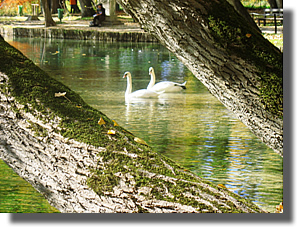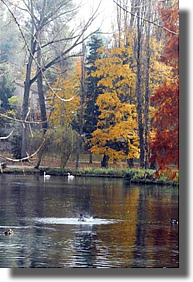CAMPELLO SUL CLITUNNO
Buffer Zone
The area identified as the buffer zone extends along the Clitunno river, from the boundary with the Municipality of Trevi to the “Springs of the Clitunno”.


The entire context of the buffer zone coincides with one of the 4 Sites of Community Interest (SCI) that, within the Project Bioitaly, has been identified in the territory of the Municipality of Campello, which is characterized by the Clitunno river and the Water Garden of the “Springs” and has unique characteristics and high value thanks to the flora and fauna present.
A stretch of the ancient Via Flaminia also lies within the buffer zone, which borders the area pertaining to the Clitunno Tempietto, along which there were several temples and chapels, villas and public buildings, part of the famous “Mutatio Sacraria“, which was once an important stop-off point along the route of the Roman Consular road.

Along the river, near the Tempietto, there are two buildings registered by the Municipality of Campello as places of historical, architectural and cultural interest, that are valuable and for which protection and safeguarding are to be considered as a reason for quality and promotion of the territory’s identity.
They are a water pumping plant and an electricity sub-station that represent interesting examples of industrial archaeology and which, in the enhancement project for the entire area from the “Springs of Clitunno” to the buffer zone, are destined to become permanent exhibition centres of the territorial system named Eco-Museum.
Within the buffer zone are the wellknown “Springs of the Clitunno”.
The naturalistic fame of the river is mainly linked to its environmental characteristics, that come from the fact that it was in part formed by immediately running waters and partly by waters that fill a depression in the land, stagnating.



The Clitunno is rich in many aquatic plants; there are many trees along its banks and the sides of the springs the most common being the characteristic cypress poplar tree; however, the main part is given by the biological content, blue algae, diatoms, green algae that lend the water its particular iridescent colour. The naturalistic fame of the river is mainly linked to its environmental characteristics, that come from the fact that it was in part formed by immediately running waters and partly by waters that fill a depression in the land, stagnating.
The Clitunno water mass was used in the past to power two mills, one built by the municipality of Spoleto under the Tempietto and the other by the Community of Trevi.


